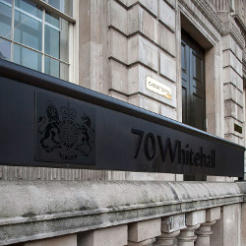The current government grants register does not help us to understand how much money the government gives to the sector and is sorely in need of improvement, says Kirsty Weakley.
Yesterday the Cabinet Office published its grants register, which led to much excitement in the Civil Society News team as we imagined a quick analysis piece with loads of interactive pie charts and searchable tables.
Alas it was not to be (well not just yet anyway) because the data is presented in a way that makes it really difficult to interrogate – surely the antithesis of the open-data drive the government has been so keen to promote.
There are several different categories intended to explain who the recipient is, including “central government”, “private sector” and what appears to be an all-encompassing “non-profit” category. There’s also a bizarre “local government and voluntary sector/charities” which has only been used by the Department for Work and Pensions.
This is an improvement on last year’s data where several different categories which all had “voluntary organisation” in the title, but the change in approach makes year-on-year comparisons difficult and potentially misleading.
Each department seems to have provided information in a slightly different way. For example the Cabinet Office has quite diligently listed all of its grants, albeit using a lot of acronyms, which is fine if you’re a charity sector journalist or policy officer at an umbrella body, but is potentially gobbledygook to anyone else.
By contrast HMRC has reported that it did make “grant funding to the voluntary, charity and community sector” worth £3m to 22 organisations. Many others refer just to the name of the programme rather than the organisations which received the cash.
What is a non-profit organisation?
To many people the term non-profit is synonymous with “charity” or “voluntary sector” but while many of us deal with those terms every day it doesn’t necessarily mean that the general public is au fait with them.
Last year my colleague David Ainsworth carefully went through the data to establish what we would consider to be a truly independent voluntary organisation, by removing things like quangos and universities, and came up with the staggering figure that just 33p in every £100 of grant money went to the voluntary sector.
Some of the things that have been classified as non-profit for the purposes of the government grant are truly confusing and include grants to local authorities, other government departments and large amounts to schools, higher education and university funding.
Also notable is the £700,000 from the Cabinet Office for the maintenance and refurbishment of the Chequers Estate, the Prime Minister’s country residence, and £26.8m from the Department for Transport for the rail operator Thameslink.
How to improve it
If you’re going to make data available it is essential that it is easy to interpret, ie people should not need to spend hours re-categorising things to make sense of it. And it would not be difficult to fix some of the issues outlined above.
Each department should report the same information in a standardised way, identifying each organisation by name and what its legal structure is – this would make it easy to filter for charities, community interest companies or anything else.
Doing this would create a register that is truly transparent and a useful resource to the sector.
In its response to the Public Accounts Committee’s report on Kids Company, which recommended the creation of a grants register, the government promised a “fundamental review”. Let's hope they get it right.









